Farrier Takeaways
- Leaving too much foot will result in compromised cadence and a shorter than normal shoeing cycle.
- Toe length can be determined by the horse’s height and body mass. It’s important to keep in mind, though, that the ranges in toe length in relation to horse height are merely guides.
- Generally, the hind toes of the Quarter Horses that Harry Serio works on are 1/8 of an inch longer than front toes.
The most important tool of the farrier trade is the mind’s eye. Developing a highly trained eye is the key to consistently bringing horses’ feet to their proper parameters. There are three tools that, if used correctly, have the potential to not only speed up the development process, they can also confirm everything your eye is telling you, regardless of skill set.
After more than 4 decades of using dividers, the Ward & Story Hoof Protractor and a tape measure, my findings have been consistent. These tools are reliable and won’t lie. The dividers and hoof protractor are mainly used to transfer toe length and angle to the opposing foot. The hoof protractor is also used to confirm a flat foot surface. Keep in mind, you have to be consistent with the protractor. It must be set firmly on the foot in the exact position each time. An eye centering aid that is incorporated into the protractor that aligns with the point of the frog works well. Also, keep in mind in regard to angle, we know that most front feet do not match. However, the protractor can at least point out how much of a difference there is, allowing for a happy medium to be reached.
The tape measure will take every bit of guesswork out of the final trimmed toe length.
We all know there are numerous landmarks that guide the trim and determine toe lengths such as mapping strategies, uniform sole thickness, length of the frog, and length of heel-toe ratios. However, after measuring thousands of feet on both shod and barefoot horses over the course of my career, the tape measure tells me everything I need to know in regard to my final trimmed toe length, as well as before and during my trim.

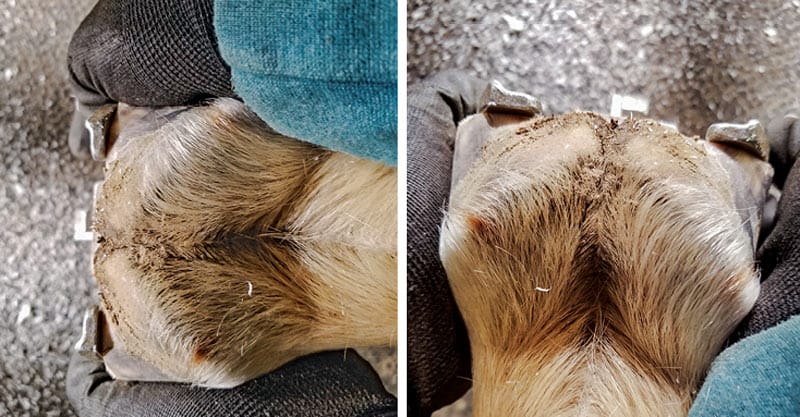
The protractor is set firmly in place to confirm a perfectly flat surface. Sighting in this manner will reveal daylight where any imperfections are in the trim such as low quarters, a high spot or heel that might drop off slightly. At this point, the necessary corrections can be made.
Consequences of Too Much Foot
Farriers are often taught that we shouldn’t remove an excessive amount of foot while trimming. The consequences are rather obvious — pain that ranges from stingy feet to corium damage and a lack of protection from concussion, among others. But we aren’t often taught the consequences of leaving too much foot.
When measuring feet, it’s important to distinguish between long-footed horses such as Saddlebreds, Tennessee Walkers and Arabians, and short-footed horses such as Quarter Horses. The majority of my career centered around shoeing high-end Quarter Horses, so I will focus on them.
Working hunter horses at this level are hauled extensively during peak show season and they are on the road for months at a time. A vast majority of the horse show venues are riddled with blacktop and concrete to and from the arenas.
I take a more conservative approach with horses that I’m working on for the first time …
There is no room at all for error in trimming and shoeing these horses. Trimming to that fine line is critical. Trimming too short or leaving a high spot under normal conditions might go unnoticed. The same horse pounding the blacktop and concrete to and from the arenas and being schooled several times a day in preparation for a class will show signs within the first 24 hours of being on the show grounds that there is a problem that needs to be addressed immediately.
When leaving too much foot, it becomes exacerbated within a couple of weeks. It will result in compromised cadence and a shorter than normal shoeing cycle. Either way can result in a no-win situation, literally.
Some horses are great movers regardless of whether they have too much foot, but they are few and far between. Quality of movement and consistency of gait is a major consideration when shoeing western performance horses, as well as hunters under saddle.

After all areas of excess growth are removed and uniform, wall thickness establishes that the fine line for this particular foot has been reached.
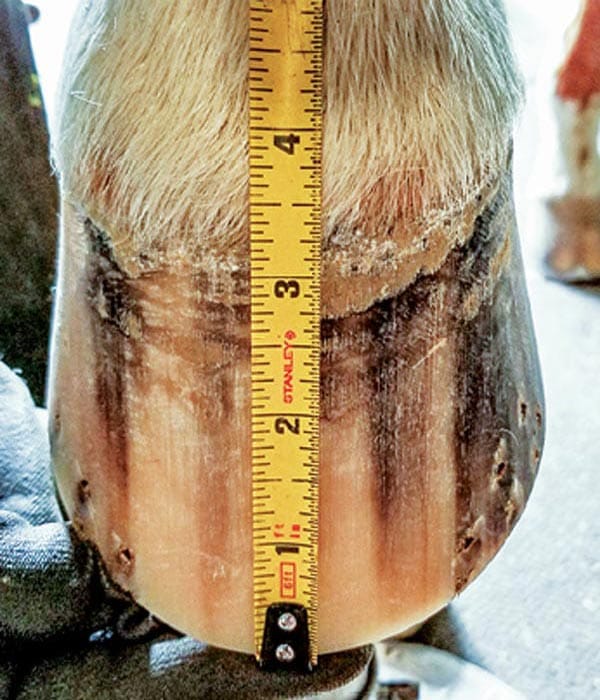
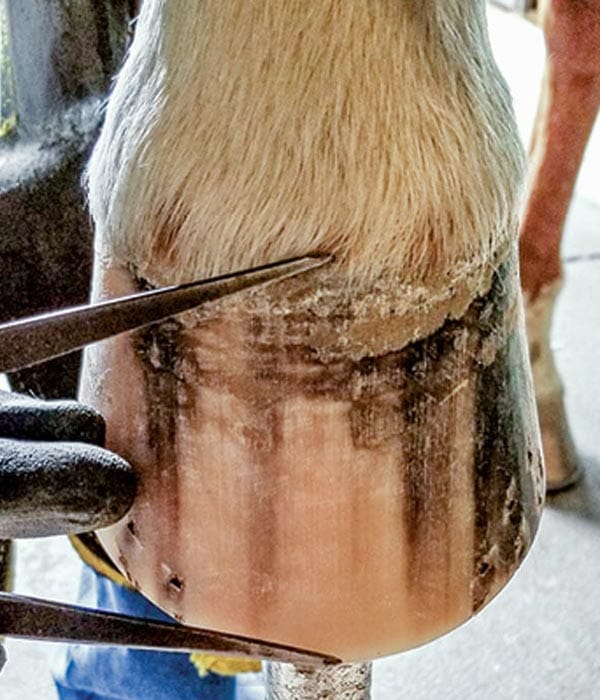
Setting the dividers to established toe length to the opposing foot.
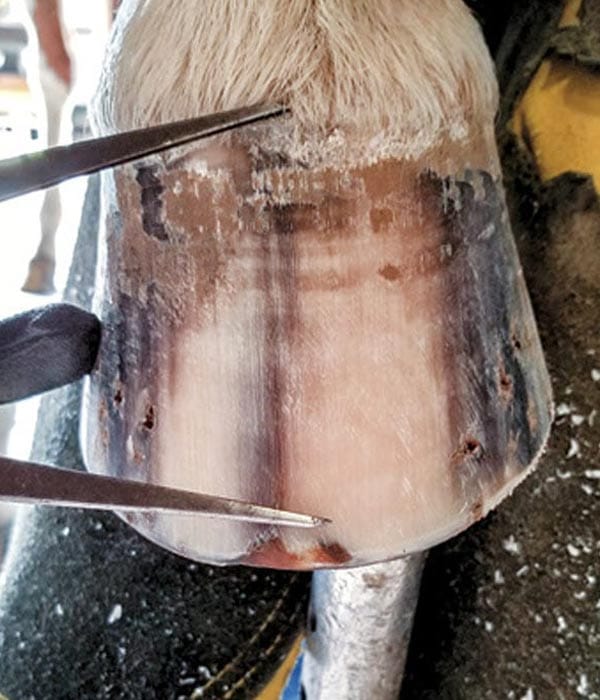
The established toe length has been transferred.
Trimming and Shoeing Protocol
My trimming and shoeing protocol is straight forward. I visually inspect the horse as it is being walked toward me. I make a mental note of four key factors — landing, load, breakover and the swing phase. I ask questions about the horse’s history and whether it has had previous problems.
Once the horse is in cross ties, I measure both front and hind feet. It’s important to understand that I don’t use the tape measure to dictate where I’m going to trim to. I use it to measure the foot before I start, so I know what the toe length is. I measure it after the trim to know what I end with. After making a nipper run, I’ll measure it to determine whether more foot should be taken off.
I also pay close attention to shoe wear. I know where the comfort zone is for the horses that I have been shoeing regularly. I definitely take a more conservative approach with horses that I’m working on for the first time. It’s important that changes are subtle. Changes might need to be made but anything more than those that are subtle in the first cycle can cause more harm than good. The majority of the time, I find that there aren’t many changes that need to be made anyway because high-end horses usually are shod decently. The goal that we all strive for is a foot that comes to the ground flat, loads evenly and breaks clean with the least amount of effort.
Trimming feet to proper parameters consistently in a timely manner can take years of trial and error. Learning from highly-skilled farriers will definitely pay off. Personally, I was fortunate that I was able to spend a lot of time early in my career with a handful of world-class farriers. Lee Liles and Terry Stever, both of Sulfur, Okla.; Dave Farley of Coshocton, Ohio; Danny Terry of Pilot Point, Texas; and Dwight Sanders of Kenly, N.C.; taught me the finer points of horseshoeing. They instilled in me the value of the dividers, the hoof protractor and the tape measure.
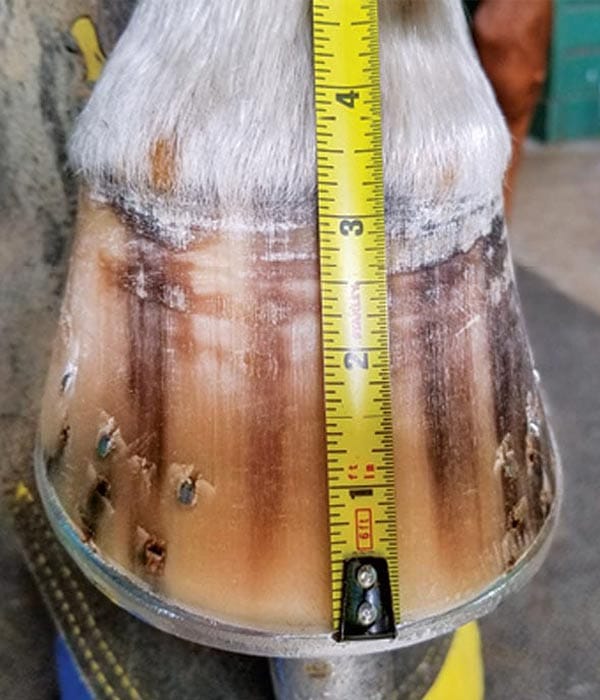
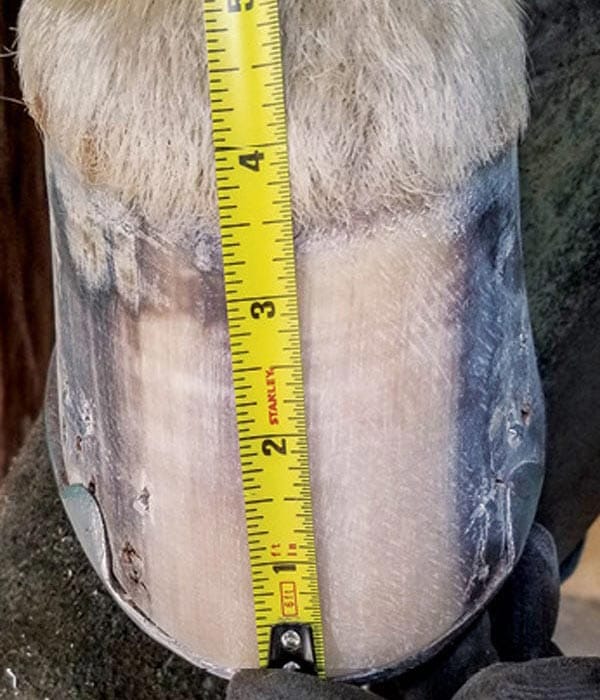
It’s Not Arbitrary
Toe length is not arbitrary. It can be determined by height and body mass (Figure 1). My findings are based on an exact measurement from where the toe meets the ground or shoe to the hairline. Although the measurements are geared toward Quarter Horses, toe lengths differ according to breeds and each has their own guidelines that get into that fine line in the trim.
The natural growth process not only produces length but also wall thickness. You have to decide whether the reduction in length will come from both situations. Those dimensions must be determined before your nipper run.
Keep in mind that nothing we do can be etched in stone. The terms “always” and “never” should be avoided at all costs when giving explanations. An open mind is golden. The information I have presented here has served me well. It’s nothing more than tools to try and perhaps add to your toolbox if you choose to do so. Also, keep in mind that fine-tuning feet consistently is the cornerstone of every great farrier’s practice. It’s the number one component to landing the higher end accounts and being in demand throughout the country.
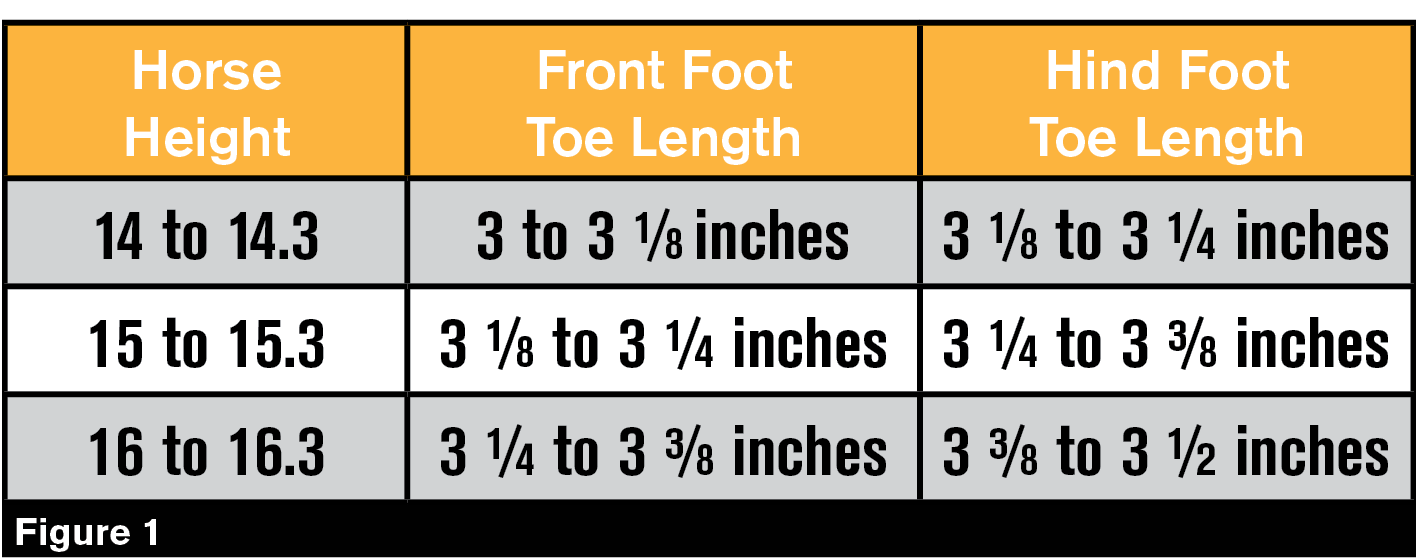
As alluded to earlier, developing the mind’s eye is our most important tool as farriers. It’s what allows us to see the end result before we get started.
When trimmed properly, the hind toes are generally 1/8 of an inch longer than the fronts. This extra length provides the horse leverage. Discipline can definitely play a role in manipulating angles and toe lengths, resulting in a greater margin between the front and hind feet. For example, when shoeing reiners, the main objective is providing a horse with a base necessary to accommodate a longer, wider shoe to increase sliding distances and to control direction. Achieving this might involve trimming for a distinct angle and toe length, totally disregarding the 1/8-inch rule.
Although fine line toe lengths differ according to breed, as stated earlier, the 1/8-inch rule between the front and hind is fairly consistent. Regardless of the breed that you’re shoeing, a professional farrier should have a good understanding of the fine line toe lengths for your breed.
If the foot is significantly overgrown, the parameters can change dramatically in regard to the final length of the trim. The reason being is that the sensitive structures migrate outward. If you are not sure, the best approach is to use your thumb to palpate the sole for integrity or lack thereof, as you trim. The fact is, on long, overgrown feet, it can and will take a few short cycles to get the sensitive structures to recede to normal parameters. It’s important to incorporate palpation into your process when trimming to the fine line.
The better my understanding of toe lengths became over the 40-plus years of my career, I have found that the type of feet I focused my attention on were those of barefoot horses. These horses live in ideal conditions resulting in maintaining textbook feet that needed very little farrier intervention, other than a minimal amount of shaping with the rasp from one cycle to the next. Measuring feet in such a natural state proved time and time again that the hind feet are consistently 1/8 inches longer than the front. Once the 1/8-inch rule, as I refer to it, became the cornerstone of my trimming protocol, the results were a game-changer. I started to see comfortable, clean moving horses with excellent cadence that were consistently performing and placing well.

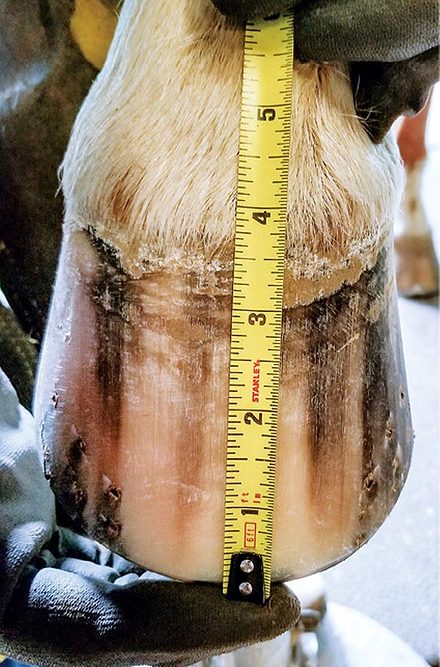







Post a comment
Report Abusive Comment